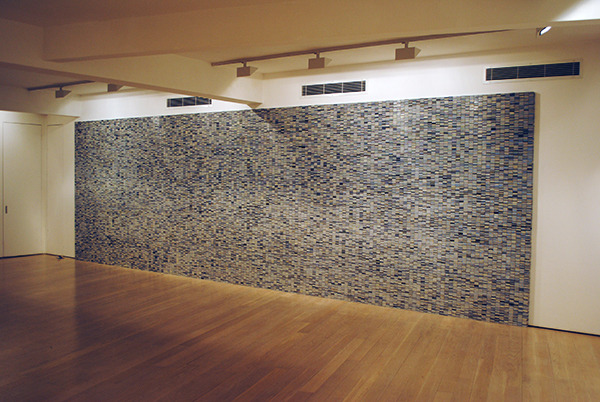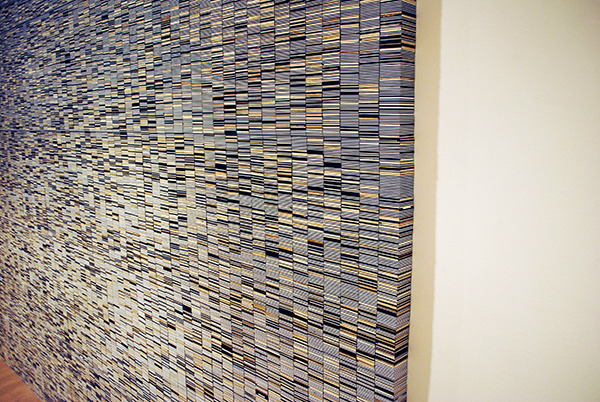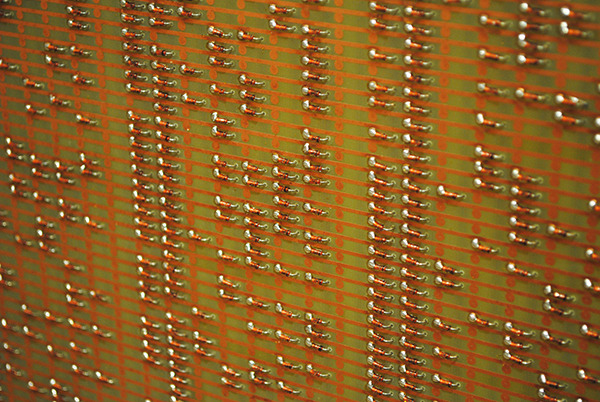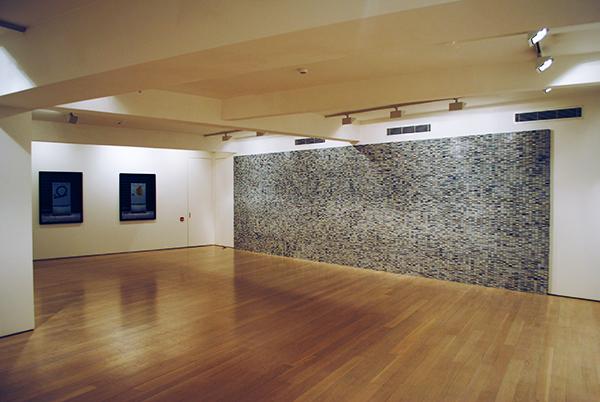Annely Juda Fine Art is currently presenting an exhibition of work by German artist Philipp Goldbach. For this exhibition, the artist’s second with the gallery, Goldbach is presenting three new series of works. In a new series of photographs, telephone utility boxes are photographed with what is apparently curious graffiti.
Using analogue photography, however, the coloured lines are in fact ‘drawn’ in the dark room with the light of a torch, straight on to photographic paper. Telephone utility boxes appear in urban spaces and are the communication structures for telephone and internet traffic. Often sprayed with graffiti, they also serve as a subcultural form of communication.
 Image: Philipp Goldbach, Via Lucis (2015) ca. 150,000 small-image formal slides, former slide archive of Cologne University’s Institute of Art History. Photo: P A Black © Artlyst 2016.
Image: Philipp Goldbach, Via Lucis (2015) ca. 150,000 small-image formal slides, former slide archive of Cologne University’s Institute of Art History. Photo: P A Black © Artlyst 2016.
Via Lucis, 2015 is made from the entire slide collection of the archives of Cologne University’s Institute of Art History. The slides have been the supporting material for many lectures at the University since the 1950s, now phased out after the introduction to digital imaging. 150,000 picture slides – photographic reproductions of art works representing over 2000 years of cultural history – are arranged covering an area of 2.5 x 8 meters to form a three-dimensional mural with a random pattern.
The ROM (read-only memory) is a data storage medium, whose data content is permanently recorded in production. In 12 new works, Goldbach has hand-built Read Only Memory boards with technical means common from the 1950s to 1970s. These ROMs encode passages from canonical texts addressing ideas and approaches to a universal language or “Lingua Universalis”. Conceived in the seventeenth century as a universal and formal language to express mathematical, scientific, and metaphysical concepts, it is widely seen as the conceptual precursor to digital communication. Similarly, photography has been seen as a type of “Lingua Universalis”, interpreting objects of the world through apparatus in ‘words of light’.
 Image: Philipp Goldbach, Via Lucis (2015) ca. 150,000 small-image formal slides, former slide archive of Cologne University’s Institute of Art History. Photo: P A Black © Artlyst 2016.
Image: Philipp Goldbach, Via Lucis (2015) ca. 150,000 small-image formal slides, former slide archive of Cologne University’s Institute of Art History. Photo: P A Black © Artlyst 2016.
In these new works, Goldbach explores forms of communication and record-making, be it educational, written, digital or artistic. By using outmoded technologies he re-examines the process of acquiring knowledge and storing memory in an ever technologically-advancing world.
 Image: Philipp Goldbach, The Advancement of Learning (F. Bacon), Read Only Memory (2016 ). Photo: P A Black © Artlyst 2016.
Image: Philipp Goldbach, The Advancement of Learning (F. Bacon), Read Only Memory (2016 ). Photo: P A Black © Artlyst 2016.
About the artist:
Goldbach was born in 1978 in Cologne, Germany, where he lives and works. He studied Art History, Sociology and Philosophy at Cologne University and holds an assistant professorship in photography at the Academy of Media Arts, Cologne. In 2008 he was awarded the Vordemberge-Gildewart Scholarship.
Photos: P A Black © Artlyst 2016.
Lead image: Philipp Goldbach, The Advancement of Learning (F. Bacon), Read Only Memory (2016 ). Photo: P A Black © Artlyst 2016.
Philipp Goldbach: Ars Lingua Universalis – Annely Juda Fine Art – until 24 March 2016.

